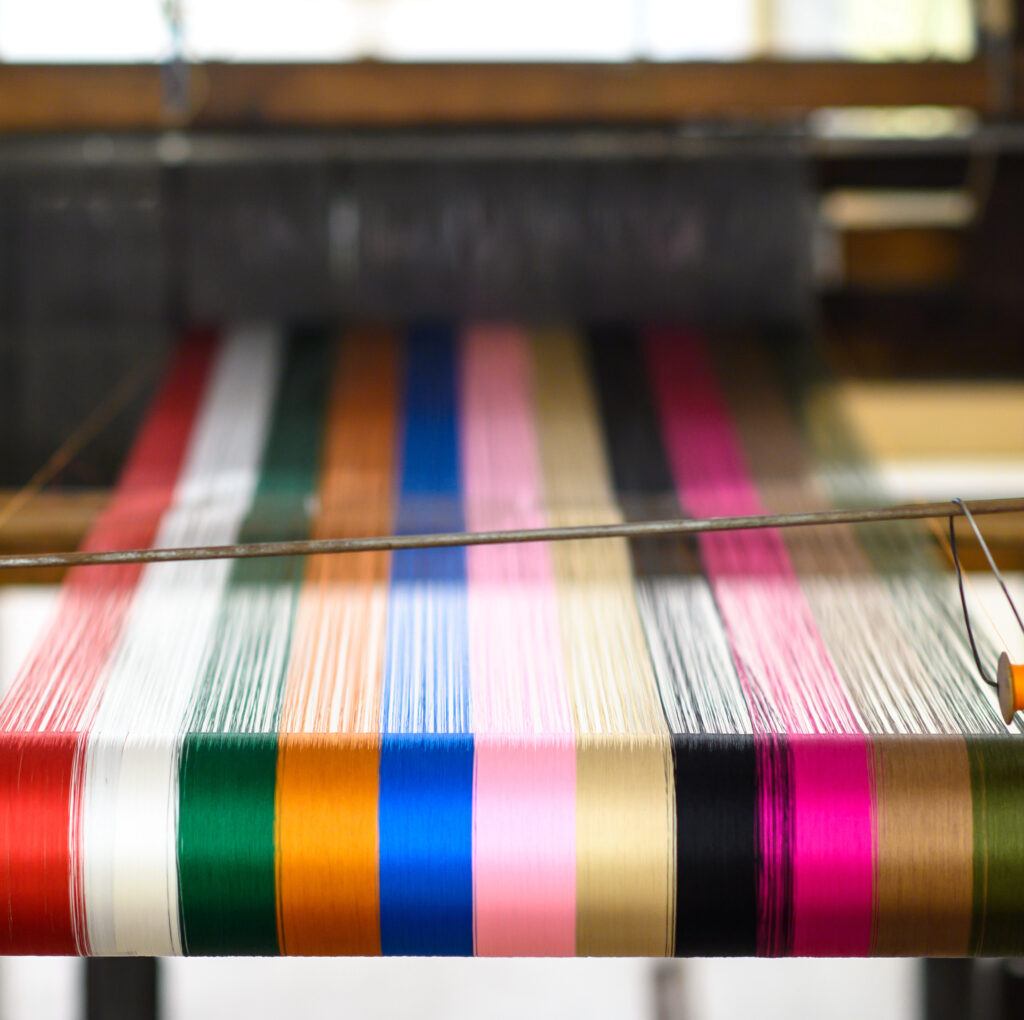The Lyon Silk Square: A Story Woven in Elegance
Do you love wandering through museums, traveling to learn, and sharing your discoveries? In Lyon, there’s one object that perfectly captures the city’s history and refinement: the silk square. More than a fashion accessory, it’s a cultural treasure that has charmed lovers of beauty for centuries.
Silk in Lyon: A Living Legacy
Back in the 16th century, Lyon became the world capital of silk. The city’s silk makers were true visionaries—organizing production, designing patterns, sourcing threads, and selling their luxurious fabrics far beyond France’s borders.
The Canuts, Lyon’s famous silk weavers, passed on their savoir-faire from generation to generation, shaping a heritage that made the city shine across Europe. Even today, one can almost hear the echo of looms in the Croix-Rousse district—an enduring reminder of Lyon’s vibrant artisanal past.
But before it becomes a scarf or a silk square, this extraordinary story begins with a single, delicate thread: the thread of the silkworm.
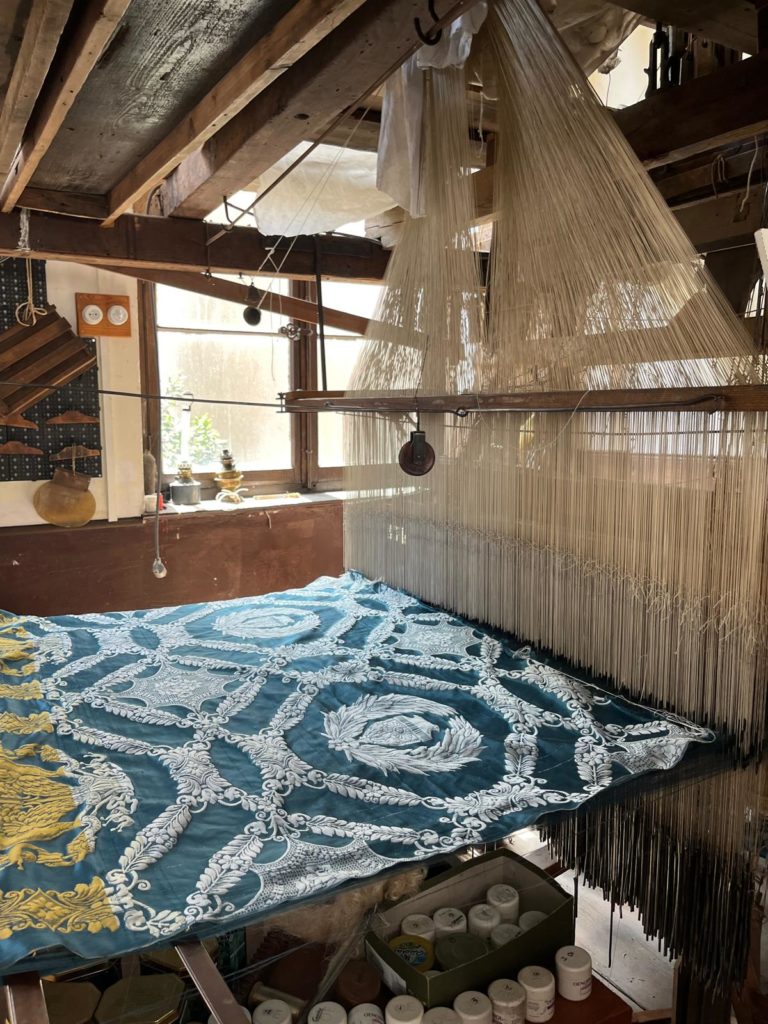
Loom from the Atelier Mattelon in Lyon
The Art of the Thread
Everything starts with the Bombyx mori, the mulberry silkworm, whose cocoon hides an incredibly fine filament. Each cocoon can produce up to 1,500 meters of continuous thread—thinner than a hair, yet remarkably strong.
Once unwound and assembled, it gives the fabric its shimmering reflections, airy lightness, and signature softness. Silk’s magic lies in how it captures light—gleaming from one angle and glowing softly from another. It’s a living material, constantly shifting, breathing with you.
Warm in winter, cool in summer, silk follows the body naturally. That’s why a silk square isn’t just beautiful to look at—it’s a pleasure to wear. And when cared for properly, it can last for generations, passed down as a small but precious piece of family heritage.
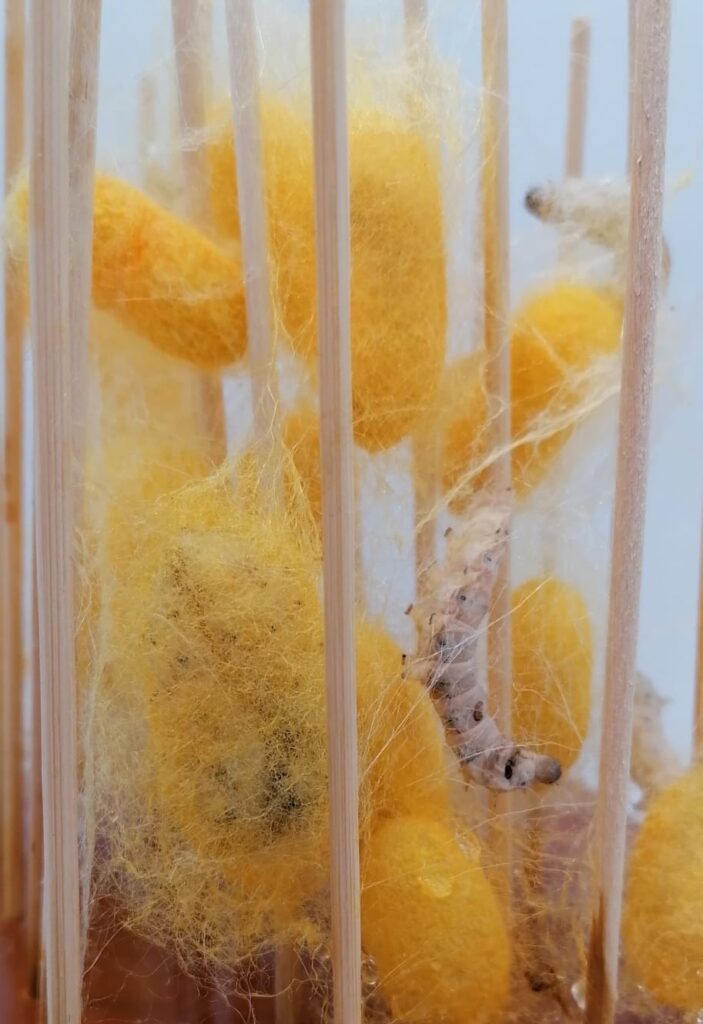
Silk worms in their cocoons
The Hands Behind the Beauty
Creating a silk square requires time, patience, and artistry.
The design comes first—imagined by an artist or textile designer, often inspired by nature, travel, or Lyon’s own history. In the 19th century, the city even established the Classe de la Fleur at the École des Beaux-Arts, training artists to master botanical illustration. Their finely detailed drawings became an endless source of inspiration for silk makers.
The weaving once took place in the city centre on Jacquard looms—a Lyon invention that transformed textile art by enabling intricate patterns. Today, the city’s looms have fallen silent, as their sound and vibration are ill-suited to modern urban life. To preserve both the craft and the city’s tranquility, silk weaving now takes place outside Lyon, in workshops where artisans can work freely without the noise and vibration of the looms disturbing daily life. Yet Lyon’s exceptional expertise survives through historic workshops like Prelle and Tassinari & Chatel, still creating fabrics for royal palaces such as Versailles.
The dyeing and printing bring the final touch of magic. Some designs require up to twenty layers of color. The most renowned method—frame printing à la lyonnaise—is still done entirely by hand at Maison Brochier Soieries. A visit to their workshops reveals passionate artisans who keep this centuries-old craft alive, one color at a time.
Hand-Painted Velvet: The Signature of Brochier Soieries
Among Brochier’s most exquisite creations is hand-painted panne de velours—a rare and time-honored specialty. The fabric, woven in black and white, is first shaved and polished to achieve its signature lustre. Then, stretched over long tables, it’s entrusted to textile artists who paint each motif by hand.
Mixing their own dyes and applying color shade by shade, they transform velvet into a luminous canvas. After a final fix and polish, the material reveals extraordinary depth and brilliance. Each piece—shawl, stole, or scarf—is a one-of-a-kind work of art, a testament to Lyon’s exceptional craftsmanship and timeless elegance.
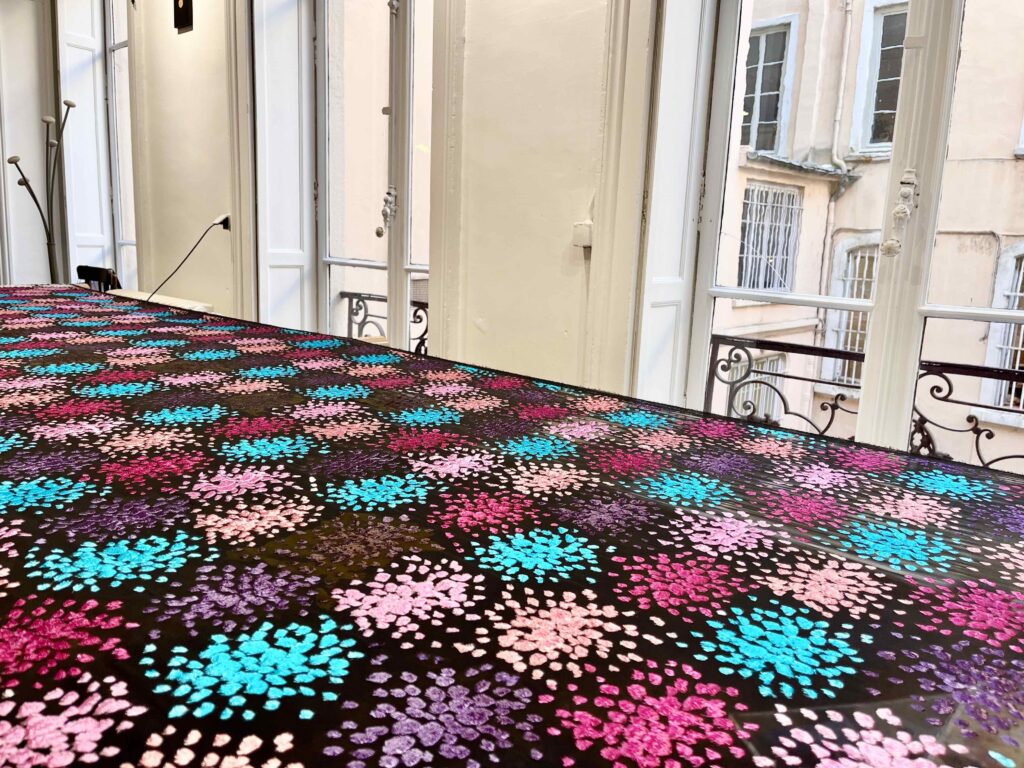
Hand painted velvet at Maison Brochier Soieries workshop.
Why Choose a Lyon Silk Square?
To own or gift a Lyon silk square is to embrace elegance and authenticity. Worn around the neck, in the hair, or tied to a handbag, it brings refinement to any look.
It’s an accessible luxury—a thoughtful gift that supports local artisans and keeps a centuries-old tradition alive. Lightweight and easy to carry, it’s the perfect souvenir from Lyon: a piece of history you can wear.
Beyond its beauty, a silk square carries a soul. Every motif tells a story of artistry and patience; every hue speaks of careful, human work. Owning one is like holding a living fragment of Lyon’s creative spirit.
How to Spot a Genuine Lyon Silk Square
A few simple clues can help you recognize an authentic piece:
The touch: genuine silk feels soft, cool, and smooth.
The finish: hand-rolled hems—slightly irregular—are a sure sign of craftsmanship.
The colors: rich, luminous tones reveal the precision of artisanal printing.
The small imperfections: subtle shifts in frame alignment are charming marks of the hand-made process.
The origin: look for the Fabriqué à Lyon label or certificate of authenticity.
And above all, trust transparent artisans—those who share their process, their passion, and their tools.
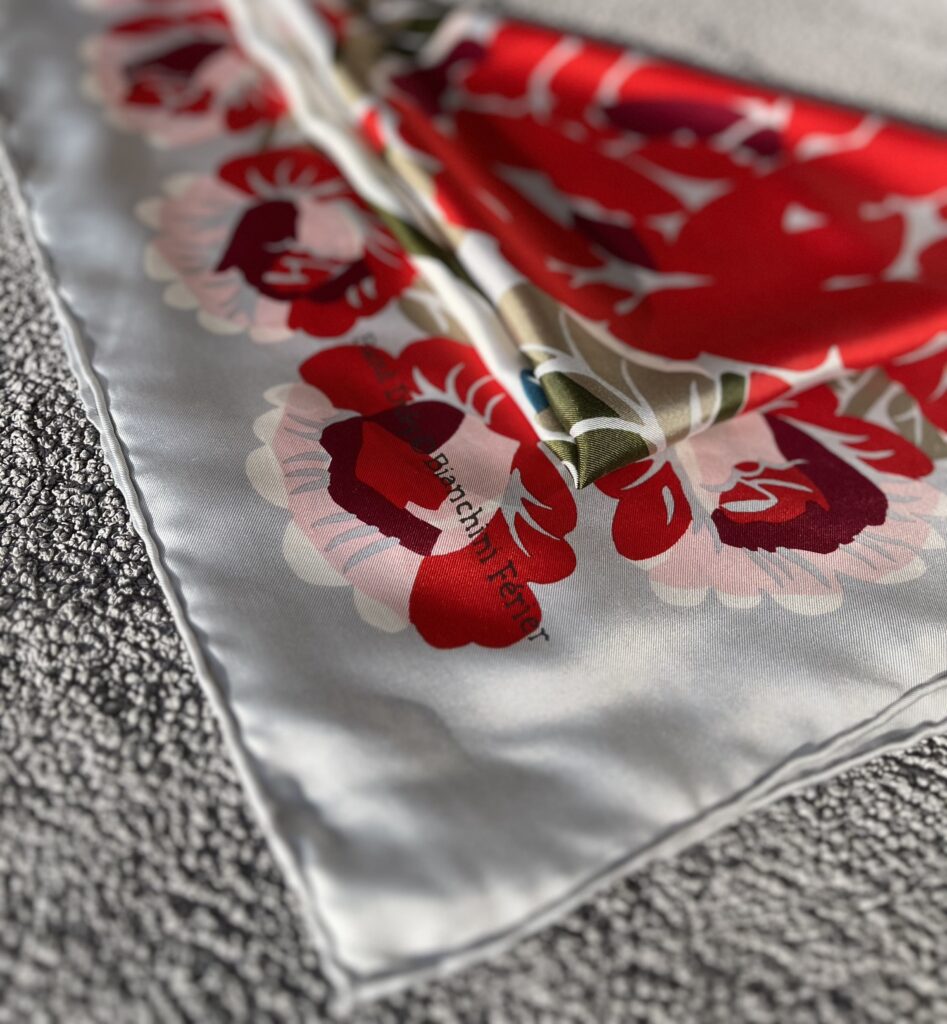
Hand-rolled silk square.
A Piece of Lyon to Wear
A Lyon silk square is more than an accessory—it’s a story, a heritage, a touch of timeless grace. Elegant, refined, and deeply rooted in tradition, it carries the spirit of Lyon wherever it goes.
So next time you stroll through the city or visit a museum, let yourself be drawn to its softness and its light. Take a piece of Lyon with you—a piece of history you can wear.
Written by Brochier Soieries, a Lyon silk house founded in 1890, devoted to the art of silk and the excellence of French craftsmanship.

